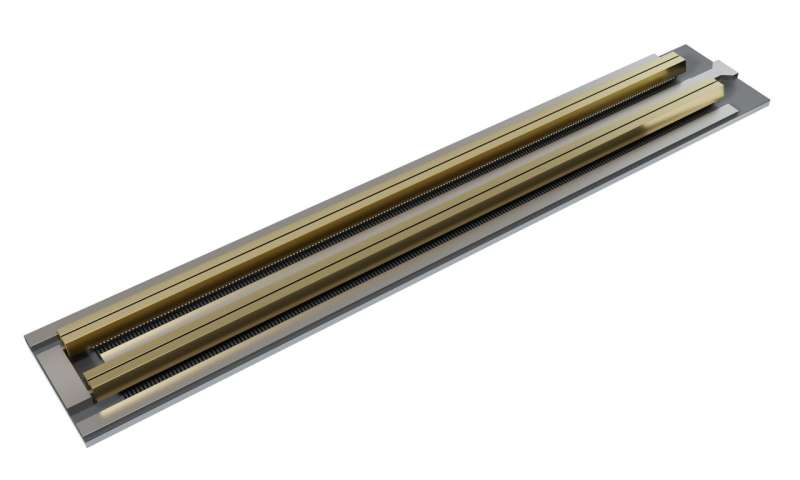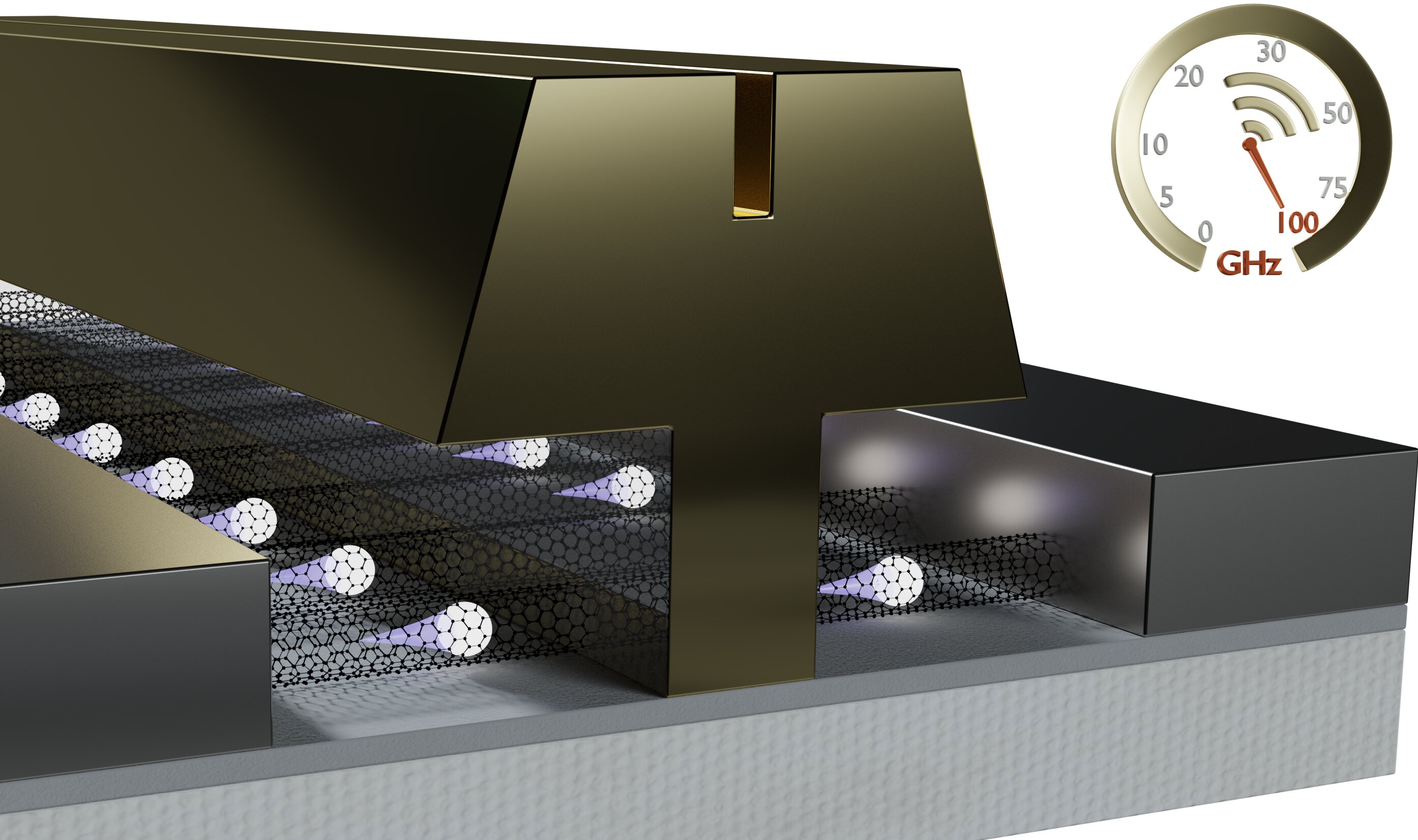November 28, 2019 feature

As we enter the wireless world of 5G, communications in the millimeter-wave band (i.e., from 30 to 300 GHz) will become increasingly important, particularly for high-speed wireless data-transfer applications. The trouble is that at these small wavelengths, the on-circuit signal strength degrades rapidly, thus requiring the circuit to be highly integrated into the smallest possible footprint. To best implement this, the high-frequency transistor technology needs to be compatible with the workhorse technology of digital electronics: complementary metal-oxide-semiconductors (CMOSs).
Recent studies have suggested that transistors made of aligned carbon nanotubes could lead to better performance in wireless devices than commonly used III-V semiconductors. This is primarily due to their highly linear signal amplification and their better compatibility with CMOS circuits.
With this in mind, researchers at Carbonics Inc., a semiconductor electronics company based in Los Angeles, have recently developed a new type of transistor made of aligned carbon nanotubes. This new transistor, presented in a paper published in Nature Electronics , operates at gigahertz frequencies and is easier to integrate with CMOS technology than most existing transistors.
"During my graduate studies, I worked with Prof. Peter Burke at UC Irvine (one of the original torch bearers for the technology) investigating radio-frequency applications for carbon nanotubes," Christopher Rutherglen, one of the researchers who carried out the study, told TechXplore. "After graduation, I continued the effort at a company called Aneeve LLC where the focus was on making high-frequency transistors using carbon nanotubes, using IP (intellectual property) licenses from Prof. Chongwu Zhou's group at USC."
In 2014, Aneeve LLC, the company where Rutherglen was working, was re-incorporated as Carbonics Inc. after receiving substantial venture capital funding. Since then, the company has been trying to develop and ultimately commercialize high-frequency carbon nanotube transistors. The results, recently published in Nature Electronics, are a significant leap forward both for Carbonics Inc. and for the overall evolution of this particular type of transistor.
The key difference between the high-frequency transistors developed by Rutherglen and his colleagues and comparable incumbent technologies is that the former are made of thousands of aligned carbon nanotubes rather than higher-dimensional Si or III-V materials. An important advantage of carbon nanotubes is that they are one-dimensional materials, and thus have superior transport characteristics.
"For example, as electrons are transported through any material, there is a tendency for them to scatter or collide along their path of travel, which ultimately reduces the speed of the overall device," Rutherglen explained. "In one-dimensional materials such as carbon nanotubes, electrons can travel much longer distances before scattering because there are fewer available states the electron can scatter into. Put simply: It cannot scatter up or down, right or left, because no such states exist in 1-D materials."
A further advantage of carbon nanotubes in transistors is that they can be applied to a wide variety of substrates using a simple surface-coating method. This characteristic facilitates their integration with CMOS and other semiconductor technologies, as it makes them easier to combine with other materials.

"For nearly two decades, carbon nanotube-based high-frequency transistors have been touted as a game-changing technology," Rutherglen said. "However, the inflated expectations in those early days were not delivered upon, leaving many to subsequently discount the technology's merits and move on. As reported in our paper, we have demonstrated for the first time that carbon nanotube high-frequency transistor technology can deliver incumbent-beating device performance in key metrics."
The study carried out by Rutherglen and his colleagues opens up new possibilities for the development of transistors that are easier to integrate with CMOS circuits. Their findings also suggest that the performance of transistors could be increased further by addressing some of the known challenges associated with developing this type of technology.
In the future, the results collected by this team of researchers could prompt change in the semiconductor industry, encouraging electronics manufacturers to reassess the design and structure of existing transistors. In order to take the aligned carbon nanotube transistors from a prototype stage to the mass-market, however, the technology will still need to receive investments of hundreds of millions of dollars.
"Our next step is to continue improving upon the results achieved and work with industry partners in furthering the technology along," Rutherglen said. "We are currently engaged in licensing and technology transfer partnerships with industry participants."
More information: Christopher Rutherglen et al. Wafer-scalable, aligned carbon nanotube transistors operating at frequencies of over 100 GHz, Nature Electronics (2019). DOI: 10.1038/s41928-019-0326-y
© 2019 Science X Network
Citation: Highly performing and wafer-scalable aligned carbon nanotube transistors (2019, November 28) retrieved 28 November 2019 from https://techxplore.com/news/2019-11-highly-wafer-scalable-aligned-carbon-nanotube.html
This document is subject to copyright. Apart from any fair dealing for the purpose of private study or research, no part may be reproduced without the written permission. The content is provided for information purposes only.
